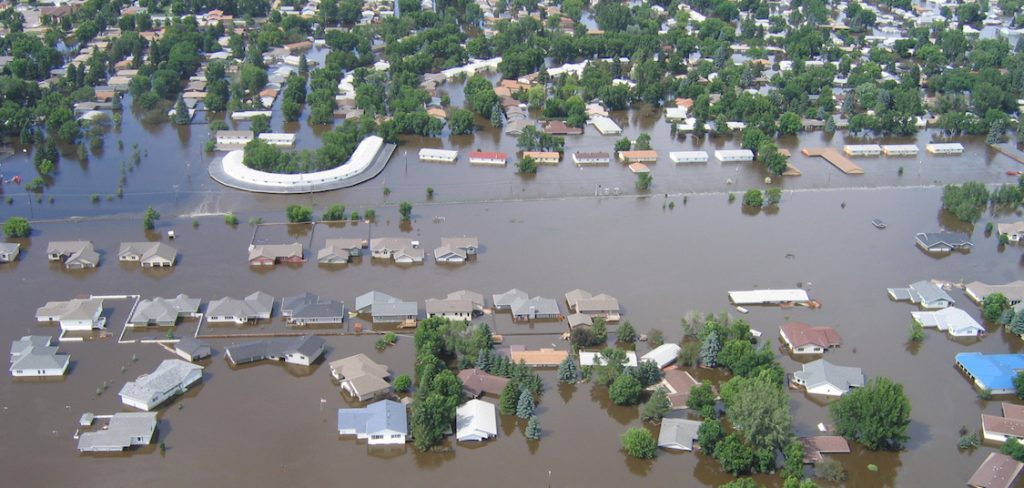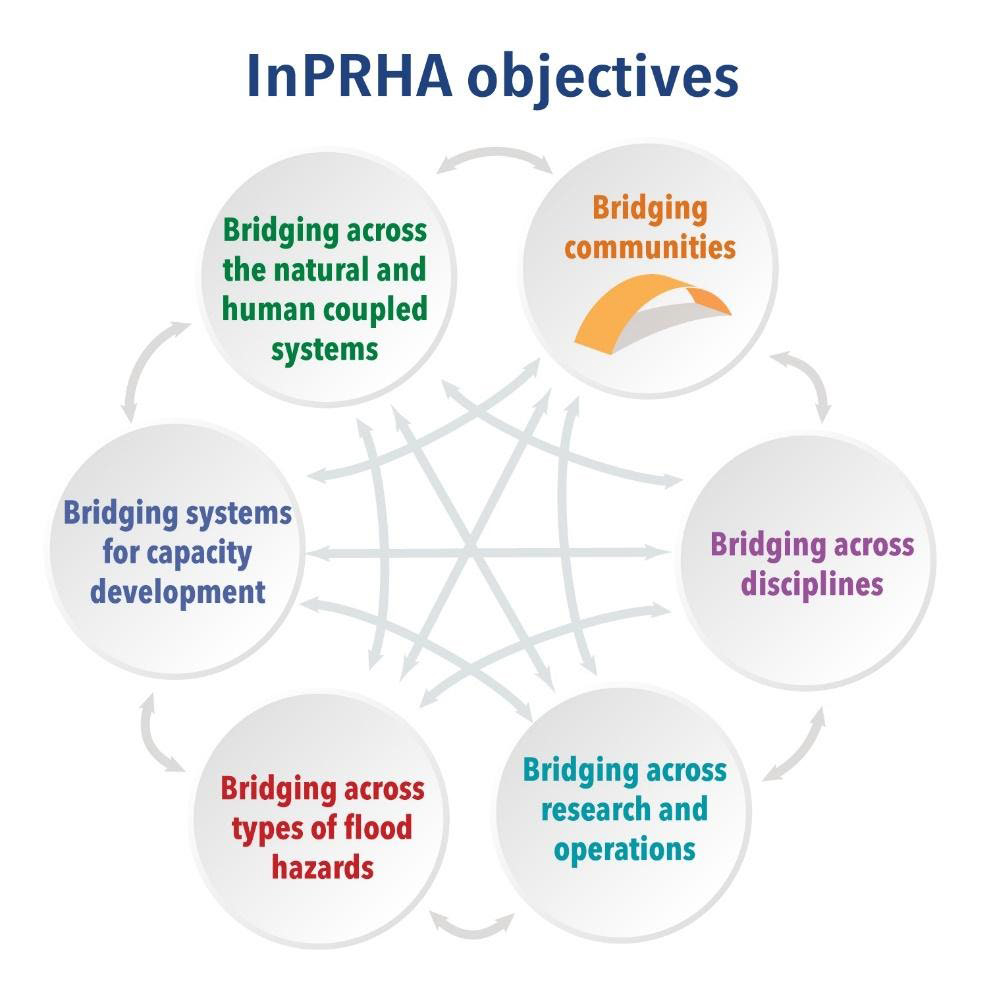

Mission
Promote cooperative international research to improve effective warning to communities from flood hazard forecasting systems by integrating precipitation and hydrologic predictions, and social sciences in a rapidly changing world.
Objectives

Bridging Communities
To co-produce new knowledge with existing communities of practice to improve dissemination, communication and behavioural response along the value chain of flood forecasting and warning for end users and the scientific community.
Bridging Scientific Disciplines
To integrate existing and emerging technologies (e.g. AI and machine learning), methods, knowledge, and approaches from different research disciplines, including meteorology, hydrology and social sciences, as well as local and Indigenous knowledge systems – to improve flood early warning chain.
Bridging Across the Natural and Human Coupled Systems
To improve the integrated forecast of precipitation, hydrology, and human systems (including managed systems for decision-making) to build knowledge about interactions between the different components of early warnings to reduce uncertainty.
Bridging Across Research and Operations
To bridge research and operations within flood forecasting and observing systems to improve:
- The verification cycle (from predictions to warning dissemination and coordination)
- The traceability of predictions and warnings
- The quantification and communication of uncertainties
- The understanding of the needs and constraints of operational centers
- The incorporation of social science knowledge into operations
Bridging Across Types of Flood Hazards
To re-envision the warning process with consideration of impacts from multi-hazard interdependencies (compound and cascading flood hazards and their uncertainties), local vulnerability, and climate change on precipitation and hydrological forecasts.
Bridging Systems for Capacity Development
To promote capacity development in flood early warning knowledge, technology and understanding in effective multi-organizational partnerships, policy and to bridge the gap between formal, and local and Indigenous knowledge systems for more inclusive and effective flood early warnings.

